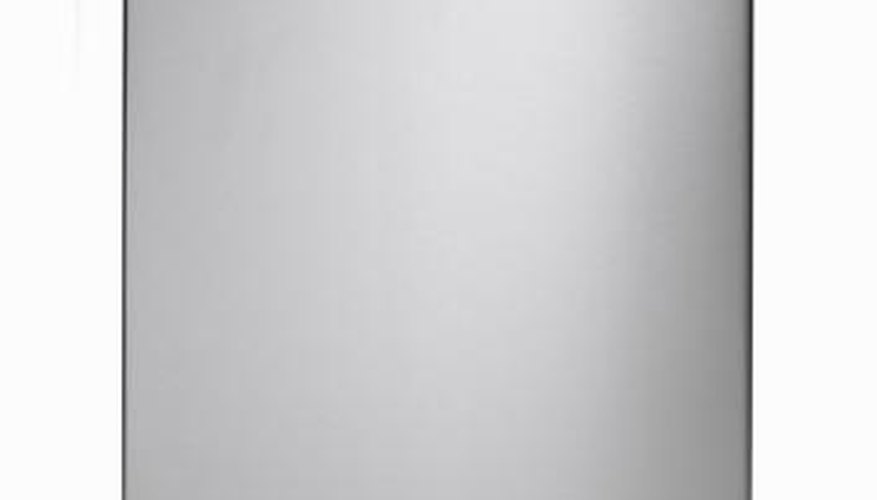Built-in dishwashers are mounted beneath kitchen cabinets and other locations and help to give a sleek and clutter-free appearance to the room where they are set up. These appliances are fastened underneath the counter by a series of brackets. The electrical, sewage and water supply hoses are all hidden from view to help a built-in dishwasher blend in with its surroundings. Despite their fixed appearance, built-in dishwashers can be removed for repair or replacement.
Electrical Supply
As with working on any major electrical appliance, cut the power for the built-in dishwasher before beginning to work on removing the appliance. Most built-in dishwashers will be directly tied into the home's electrical circuit through the wiring panel on the bottom of the machine, so you won't be able to simply pull the plug. Once you've located the circuit that controls the dishwasher, move the switch to the "Off" setting.
Accessing the Connections
The connections for a built-in dishwasher to your home's utility connections are all hooked up underneath the base of the appliance. To access these connections, you'll need to remove the panels on the front of the machine underneath the dishwasher door. The kick panel is the larger panel positioned directly underneath the dishwasher door, while the toe panel is located underneath the kick panel. Remove the screws holding these in place and pull the panels out of position.
- The connections for a built-in dishwasher to your home's utility connections are all hooked up underneath the base of the appliance.
- To access these connections, you'll need to remove the panels on the front of the machine underneath the dishwasher door.
Disconnecting Water
Because you don't want a kitchen full of water when removing a built-in dishwasher, you'll need to cut the water supply for the unit. Dishwashers are usually hooked up to the nearest water supply, such as a sink. In most home installations, this means that the dishwasher will be hooked up to the kitchen sink water supply. Trace the water supply hose connected to the front of the dishwasher over to where it meets the water supply underneath the sink. Rotate the knob to the right to cut the water. Remove the dishwasher hose by unscrewing the couplings.
- Because you don't want a kitchen full of water when removing a built-in dishwasher, you'll need to cut the water supply for the unit.
- In most home installations, this means that the dishwasher will be hooked up to the kitchen sink water supply.
Disconnecting the Drain Hose
The drain hose on a built-in dishwasher connects to the sink tailpiece, or the garbage disposal. Because most drain hoses come preconnected to the pump underneath the appliance, the only connection here you need to worry about is loosening the hose clamp at the end of the hose beneath the sink. Pull the hose out of place once it's loosened.
Electrical Supply
Even if you've never worked on any type of electrical equipment before, disconnecting a dishwasher from the electrical supply is simple. The house wiring will connect to a service panel underneath the dishwasher. Here, the wires will either be wired into the panel or onto dishwasher wires that are preconnected to the terminals. Simply cut the wire connections with a pair of wire snippers.
- Even if you've never worked on any type of electrical equipment before, disconnecting a dishwasher from the electrical supply is simple.
- Here, the wires will either be wired into the panel or onto dishwasher wires that are preconnected to the terminals.
Removing the Dishwasher
Once all the connections are removed, you can tackle the job of removing the appliance cabinet. Check underneath the dishwasher where it meets the countertop for brackets that may be holding it in position. Loosen the screws connecting the dishwasher, brackets and countertop. Place a moving pad or old piece of carpet on the floor so you can rest the dishwasher on top of it while you are working to help avoid damaging the floor.
- Once all the connections are removed, you can tackle the job of removing the appliance cabinet.
- Check underneath the dishwasher where it meets the countertop for brackets that may be holding it in position.
